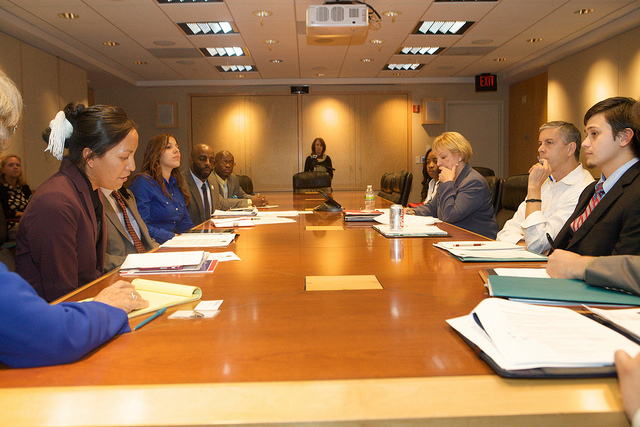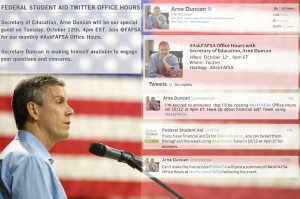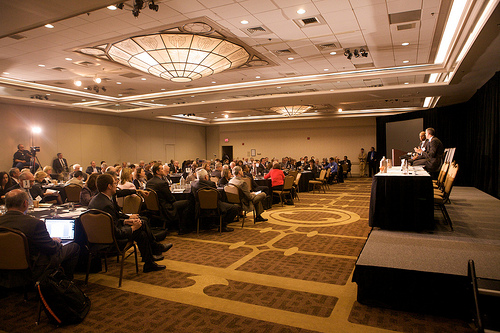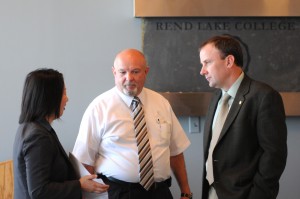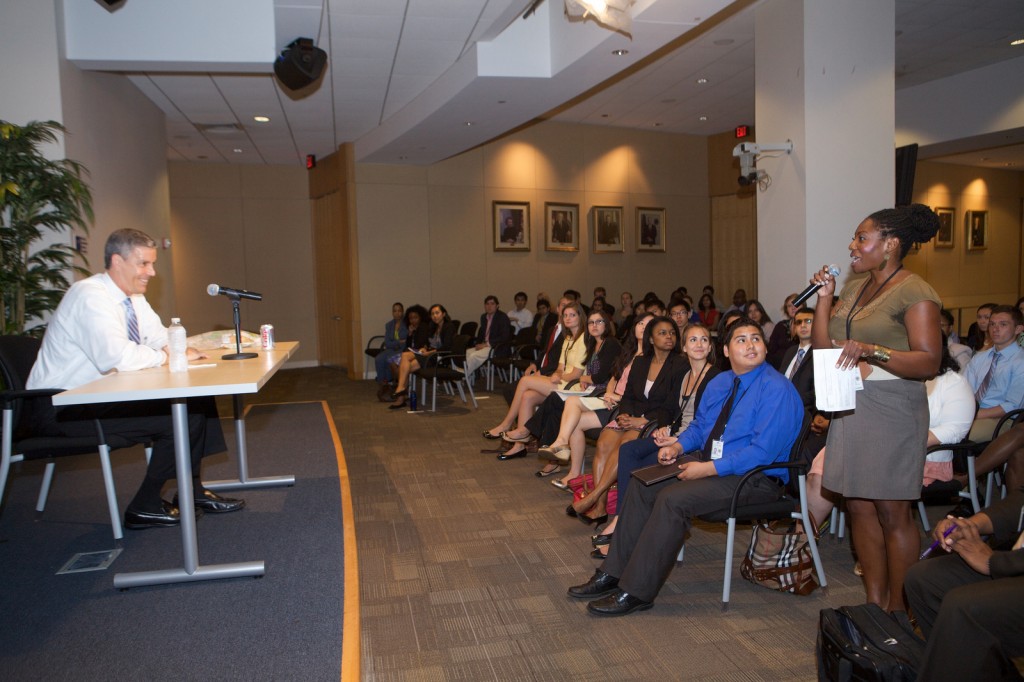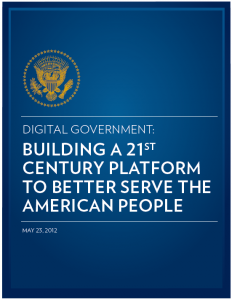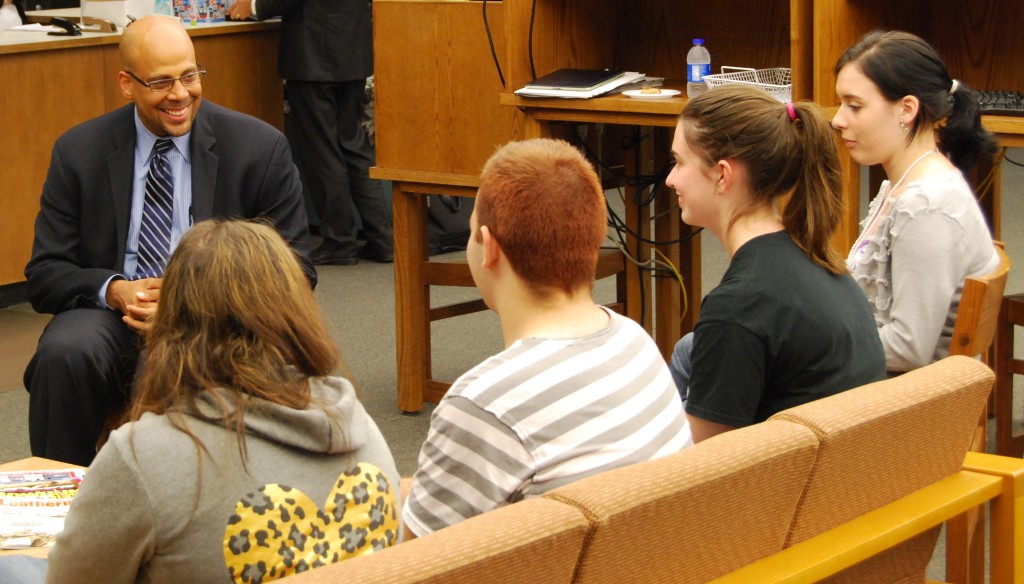
Assistant Deputy Secretary Jim Shelton talks with students during a stop at Berea College in Berea, Kentucky as part of the Department's back-to-school bus tour.
For each of the last three years, Secretary Duncan has started the school year with a bus tour visiting schools and communities across the country to find what’s working in education and to hear the concerns, insights, and lessons learned from students, teachers, principals, parents, and the communities supporting them. It’s always a welcome grounding in “real education” — the kind that children and families experience everyday — versus the “education system” policymakers and pundits love to caricature and debate.
This year, I participated more fully than I have in years past — visiting schools, grantees, education reformers, and advocates in California, Missouri, and Kentucky.
In California, I watched a Sequoia High School (Redwood City) student, who entered the school as an English Learner, introduce the music video he produced with his classmates on the John Lennon Educational Tour Bus to an audience of more than 500 attendees. Sal Khan, founder of Khan Academy, then shared anecdotes of individual students, whole classes, and entire schools achieving dramatic gains and fundamentally changing learning and teaching practices.

Assistant Deputy Secretary Jim Shelton discussed eMINTS during a "Education Drives America" bus tour stop at the University of Missouri.
In Missouri, I visited the New Franklin School to see Investing in Innovation (i3) Validation grantee eMINTS at work. Teachers and students were using relevant and engaging project-based and personalized learning powered by technology to improve student engagement, effort, and outcomes. A class of self-directed 5th-grade teams pursued Web quests on American Indian civilizations. High school juniors and seniors completed self-paced accounting courses. Teachers spoke of being renewed by the approach and the new tools. Everyone used words like “ownership,” “empowered,” and “independence” to describe the shift in the school’s learning culture. All of this was especially exciting after hearing from school and system leaders working hard to implement the program despite the challenges of decreased funding, lack of technology infrastructure, and burdensome regulation.
In Kentucky, I visited Sayre School, a high-performing and well-resourced independent school focused on building great character as well as providing rigorous learning opportunities. The students showed extraordinary poise and confidence as we discussed the relative strengths of their program and the infusion of technology as a new, but increasingly ubiquitous, tool. This visit served as an excellent benchmark as I traveled to rural Kentucky to visit the i3 Development and Promise Neighborhoods (PN) Implementation grantee, Berea College, to see their work at Clay County High School (CCHS).
Clay County suffers from all of the ills often associated with Appalachia; but CCHS has leveraged the PN and i3 grants to substantially increase the number of AP classes offered and multiply the number of students taking AP classes and, most importantly, passing AP exams with a score of 3 or better. They’ve used the PN grant to create more comprehensive and coherent student supports that have begun to reverse the dropout trend and increase college going. Teachers and students spoke eloquently about the impact these efforts have had, not only on their practices, but also on their belief systems.
One student in particular helped me synthesize everything that I had seen in the past two weeks. As I was ending my visit at CCHS with a student roundtable, I asked the students what impacts the programs had on the school and them. They spoke about the access to more AP courses, the heroic efforts of the new academic specialists to keep kids in school, the impact of grant-funded college visits, and the difference tiny amounts of resources made to teachers who cared but had nothing to work with. Then one standout student I had met earlier in the day, Rex, said:
I know I talked about the AP classes; but that’s not the most important thing. And, I know I talked about the resources—ROTC students finally having real equipment after having used brooms for years—but that’s not the most important thing. CCHS used to be an I-can’t-school… Now, we are an I-can-school… I can take AP courses. I can go to college. I can do better than my parents.
Evidenced-based programs, technology, professional development, funding — I firmly believe all these are important; but in the end, nothing is more powerful than schools, teachers, and students that believe they can.
The question that motivates me is, what combinations of tools, resources, and know-how can make every school an I-can-school?
Jim Shelton is assistant deputy secretary for innovation and improvement at the U.S. Department of Education
Click here to keep up with news and other developments of the Office of Innovation and Improvement (OII) by receiving email alerts about new posts on the OII news page.
 In celebration of National Principals Month, dozens of senior ED leaders and staff members are visiting schools today, tomorrow and Thursday across the country as part of an organized effort in which federal education officials are shadowing school leaders.
In celebration of National Principals Month, dozens of senior ED leaders and staff members are visiting schools today, tomorrow and Thursday across the country as part of an organized effort in which federal education officials are shadowing school leaders.
